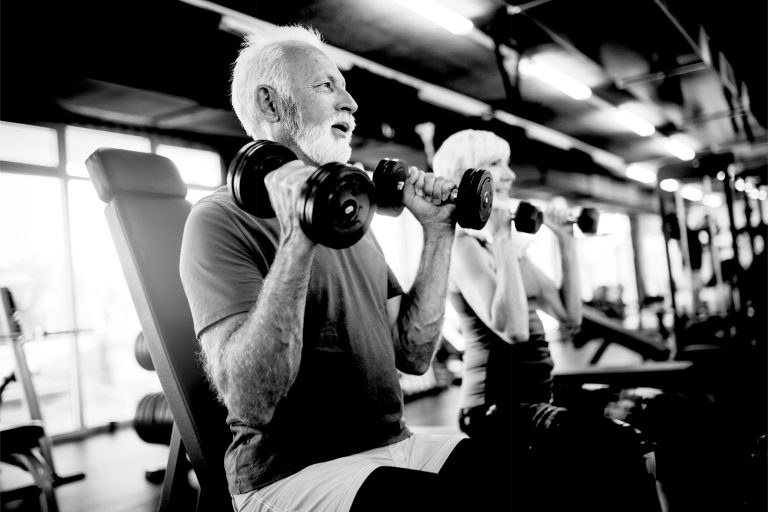Whether you’re an athlete, fitness enthusiast, or otherwise constantly physically active, you know that being limited by injuries can take a toll both physically and mentally. Some injuries take longer to heal than others, as is often the case with repetitive strain injuries (RSIs).
The good news is there are steps you can take to recover from these conditions and return to your normal lifestyle. Keep reading to find out more about what RSIs are, what really causes them, and what you can do to keep them at bay.
What is an RSI and what causes them?
Repetitive strain injuries are injuries to muscles, tendons, ligaments, bones, and nerves that are generally caused by repetitive movement or overuse of the tissue without proper recovery. These conditions often present with pain, tenderness, stiffness, numbness and tingling, or weakness, develop gradually, and in some cases can become chronic pain conditions if not treated properly early on.
There are many examples of RSIs, but some of the more common ones include plantar fasciitis, lateral epicondylitis (Tennis Elbow), carpal tunnel syndrome, Achilles tendinitis, rotator cuff tendinitis, shin splints, patellofemoral pain, and IT band syndrome. Many of these injuries develop in individuals who perform repetitive movements during sports or work activities.
Are RSIs the result of too much inflammation?
One of the common misconceptions about RSIs that often dictates much of the treatment approach is that they are inflammatory conditions. In reality, RSIs are typically NOT inflamed (at least not in terms of how we usually think of inflammation).
Despite many of the most common RSIs ending with the suffix “-itis” (meaning inflammation), there is often minimal inflammation present after the initial injury. Some studies examining the affected tissues of various tendinopathies under microscope reveal a significant lack of white blood cells and other markers that normally signify an inflammatory process. Externally, clinicians rarely note any redness or warmth that are typically associated with inflammation.
While more recent studies argue that there may still be an inflammatory component to RSIs, there is a consensus that these conditions are more often caused by collagen degeneration. Collagen is a protein that gives structure to the tissues of the body, and in healthy tissues is well-organized when viewed under a microscope. Conversely, collagen fibers in injured tissues are disorganized and therefore less structurally sound, limiting their load capacity during repetitive activities.
What is the best way to manage the pain caused by an RSI?
Patients with RSIs are commonly advised to ice frequently and take non-steroidal anti-inflammatory drugs (NSAIDs) such as Ibuprofen to relieve their pain. When symptoms persist doctors will sometimes recommend corticosteroid injections to directly access the injured tissue.
So what’s the problem with these treatment approaches?
Ice, NSAIDs, and injections are only beneficial long-term if excessive inflammation is the main source of the pain (which we’ve already established is usually not the case).
That’s not to say that you should never use ice or take an Advil when you have an RSI. If there is some inflammatory pain present then ice may be able to help with this, and at the very least can give you temporary relief by numbing the area. More importantly, there’s no harm in using ice since there are virtually no consequences of icing for short durations.
Other anti-inflammatories, however, should be used with caution. Some oral NSAIDs are known to cause gastrointestinal distress and headaches if used over a prolonged period of time, and should always be taken as directed. Corticosteroid injections also have the potential to do more harm than good, as they can actually create long-term damage in the very tissue that you’re trying to repair. This is the reason that physicians sometimes limit injections to 3 depending on the specific area being treated; the short-term benefits aren’t necessarily worth the long-term risks.
Ultimately a large percentage of the pain found in RSIs may actually come from the muscles surrounding the injury. Trigger points that develop in muscle tissue can complicate the quest for pain relief, either by directly causing pain, developing as a response to pain, or mimicking the actual source of pain. Runners with Achilles tendinitis, for example, can sometimes find significant pain relief by addressing soft tissue restrictions in their calves. Dry needling and other manual therapy techniques are a safe and effective alternative to other options when it comes to decreasing pain from RSIs.
Are there ways to prevent an RSI from developing?
Beyond generally adhering to lifestyle habits that promote tissue repair – maintaining a healthy diet, exercising regularly, and getting enough sleep at night – there are a few other external factors that could decrease the risk of developing an RSI.
While these injuries are typically caused by repetitive motions independent of biomechanical imbalances, it’s never a bad idea to re-evaluate your posture, gait, movement technique, or ergonomics. Having a proper computer setup may help a writer avoid carpal tunnel syndrome, just like learning how to land with proper knee alignment may limit patellofemoral pain in a volleyball player. None of these factors will have a huge impact, however, if the tissues continue to be subjected to constant stress without proper recovery.
It’s also worth noting that rarely are RSIs caused by anatomical imperfections or asymmetries that form the basis for many unnecessary healthcare interventions. Millions of otherwise healthy and happy individuals walk around “out of alignment” each day, never once needing a chiropractic adjustment to live their life. Thousands more subject themselves to expensive and invasive surgical procedures that may or may not have anything to do with the source of their pain. This is not a condemnation of chiropractors, orthopedic surgeons, or other healthcare professionals. The point is correlation doesn’t equal causation. There are times when these procedures are necessary, and times when they aren’t. In a large percentage of repetitive strain injuries, there are other treatment options that should be pursued first.
What is the most effective way to recover from an RSI?
In the end there is one treatment approach that rises above the others. The cream of the crop. The gold standard. The best way to heal any repetitive strain injury is…
Rest.
That’s right. The best way to recover from a repetitive strain injury is to let that injury heal. The human body is incredibly resilient, and in most situations will eventually find a way to heal itself if taken care of properly.
Of course, it must be clarified at this point that rest really means relative rest. The amount of rest required will vary based on the person, their diagnosis, and many other factors. Resting doesn’t necessarily mean sitting on the couch doing nothing for 6 weeks. There are many ways to modify activities and still allow active individuals to be active. Whether that’s playing doubles tennis instead of singles, focusing on different strokes in the pool, or exercising in a lower-impact environment, there are always ways to keep people moving.
In fact, too much rest can also negatively affect the body’s ability to heal. Muscles, tendons, and bones get stronger by adapting to the stresses placed on them. Without adequate stress, there can be no increase in strength. Too much stress over a long period of time, however, can lead to injury. To fully recover from any injury the tissue-building cells need time to catch up to previous stress and repair the damaged area. It’s a delicate balance, and even when healthy these tissues require constant load management. This is why a proper strengthening progression overseen by a physical therapist is so vital.
The challenge that healthcare providers face is convincing patients to modify their activities long enough for the tissues to fully rebuild. The reason these injuries often become recurrent is because patients resume aggravating activities too soon, either because of impatience, failure of the clinician to educate them thoroughly about their condition, a lack of a comprehensive rehab plan, or simply believing they are further along in the recovery process than they truly are.
Repetitive strain injuries can be some of the most difficult diagnoses to manage. It takes time, patience, and a very specific strength program and activity modification plan to return to 100%. At FLO Physical Therapy & Performance our physical therapists will take the time to make sure that these injuries don’t take over your life, and you can get back to the activities you love without pain or limitation.
References:
- Khan KM, Cook JL, Bonar F, Harcourt P, Astrom M. Histopathology of common tendinopathies. Update and implications for clinical management. Sports Med. 1999;27(6):393-408.
- Dakin SG, Newton J, Martinez FO, et al. Chronic inflammation is a feature of Achilles tendinopathy and rupture. Br J Sports Med. 2018;52(6):359-367.
- Mohamadi A, Chan JJ, Claessen FMAP, Ring D, Chen NC. Corticosteroid injections give small and transient pain relief in rotator cuff tendinosis: a meta-analysis. Clin Orthop Relat Res. 2017;475(1):232-243.



